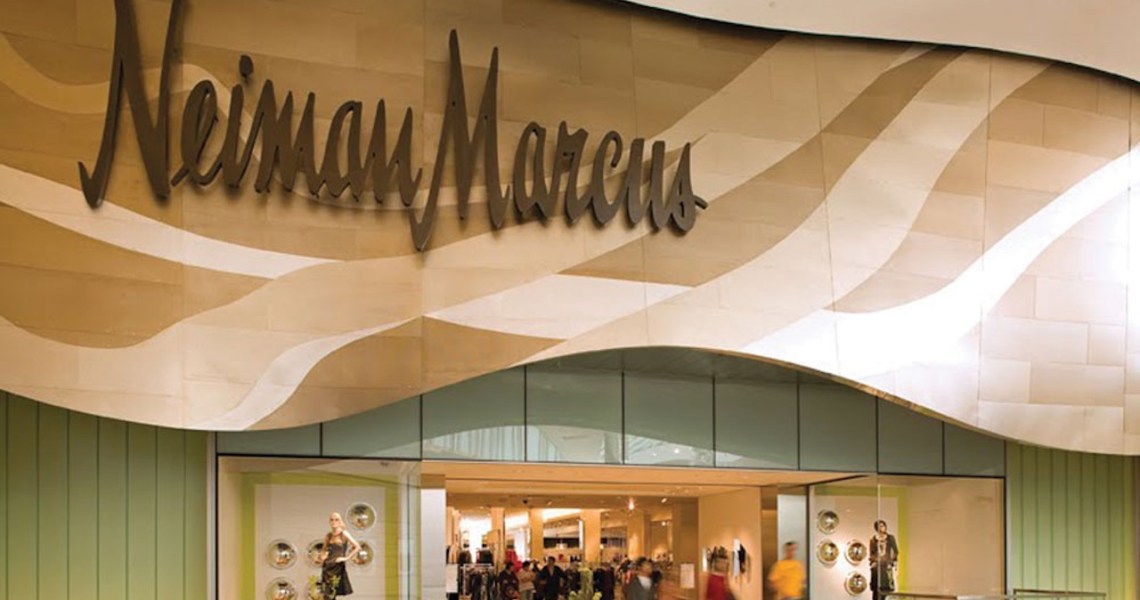Neiman Marcus filed for Chapter 11 bankruptcy on Thursday, in hopes of charting a new path forward at a time of significant disruption for fashion retail.
The luxury department-store group, which also operates Bergdorf Goodman and the e-commerce platform MyTheresa.com, has struggled in recent years under more than $5 billion in debt stemming from leveraged buyouts in 2005 and 2013. Despite current temporary store closures and widespread economic uncertainty, the company says it plans to exit bankruptcy in the fall stronger and more financially stable than when it went in.
The news capped off a week of bankruptcy announcements from major players in fashion retail, with J.Crew Group Inc. and Aldo Group Inc. likewise seeking court protection. Like Neiman, they were already facing financial challenges before Covid-19 hit and the stress became insurmountable.
In order to continue operating throughout the Chapter 11 process, Neiman has secured $675 million in debtor-in-possession financing from its creditors, who will take over majority ownership of the company from private-equity firm Ares Management Corp. and the Canada Pension Plan Investment Board, which bought the company in 2013. The creditors will also provide $750 million in exit financing.
“If you’re a Neiman Marcus fan, you should feel pretty good about the fact that you have $750 million coming in for this company,” said Jared Ellias, a professor of bankruptcy law at the University of California, Hastings. “That is a very strong vote of confidence that creditors think this company is going to survive and have a great future.”
While “everything must go!” sales at former rival Barneys may be fresh in consumers’ minds, the bankruptcy plan for Neiman Marcus and Bergdorf Goodman doesn’t include inventory liquidation or widespread store closures. The company’s MyTheresa.com business isn’t included in the bankruptcy and will continue operations.
Neiman Marcus said in March that it would shutter most of its off-price Last Call stores by the first quarter of fiscal 2021 in an effort to focus on full-price selling. For now, it plans to reopen its 43 Neiman Marcus stores and two Bergdorf Goodman stores once it is safe to do so. Already, as some states begin to ease restrictions, 10 of its stores are currently open for curbside pick-up, while two are open to customers by appointment.
Ad position: web_incontent_pos1
The next few months, uncertain as they are, will be crucial for the group. On the one hand, experts say bankruptcy ultimately shields Neiman Marcus from its biggest headwind: debt. Despite turning a profit on more than $4 billion in annual sales, most cash went toward servicing debt rather than investing for the future, and when the coronavirus pandemic hit, these payments became untenable. Even with this obstacle, Neiman managed to shore up its digital capabilities such that online sales accounted for more than 30% of its annual revenue at the time of its filing.
Still, it’s unclear how long store closures will continue, whether luxury shoppers will soon return once they do reopen, and what kind of costs retailers will need to incur to adapt to new health and hygiene concerns.
“[Neiman is] going to need a little luck because it’s not really in their control,” said Staci Jennifer Riordan, who leads the fashion practice at the law firm Nixon Peabody LLP. “It seems like they’ve done everything right: They lined up the financing, they have this good plan, they have great lawyers, they’re going to cut off all the underperforming [parts of their business]. But no one knows how long this is going to last and if shopper behavior is going to go back to normal.”
In a statement, Neiman Marcus CEO Geoffroy van Raemdonck acknowledged the “inexorable pressure” the pandemic placed on the business, but said, “Prior to Covid-19, Neiman Marcus Group was making solid progress on our journey to long-term profitable and sustainable growth.”
Even if it manages to get out from under its debt, though, it will have to evolve quickly to survive in today’s fiercely competitive environment.
Ad position: web_incontent_pos2
“In the past, a lot of these heritage luxury department stores catered to a certain consumer, and that worked for them, but that consumer is older now and maybe is not shopping or spending as much as they were,” said Alexis DeSalva, senior research analyst at market research firm Mintel.
While Neiman’s existing customers are loyal — about 35% of the group’s revenues came from Neiman Marcus credit cardholders, according to the filing — it needs to entice new customers in a way that remains true to its brand. Here, social media and seamless online/offline shopping integrations will be crucial, said DeSalva, as they offer both the personal touch that Bergdorf and Neiman are known for as well as the digital experience that shoppers today expect.
“I think that those kinds of evolutions, offering those opportunities to shop when and how you want to, is really valuable,” she said. “And that younger consumer may view that option more valuable than a discount, and then you can kind of improve some of the sales and protect the profit without relying on cheapening the brand.”




